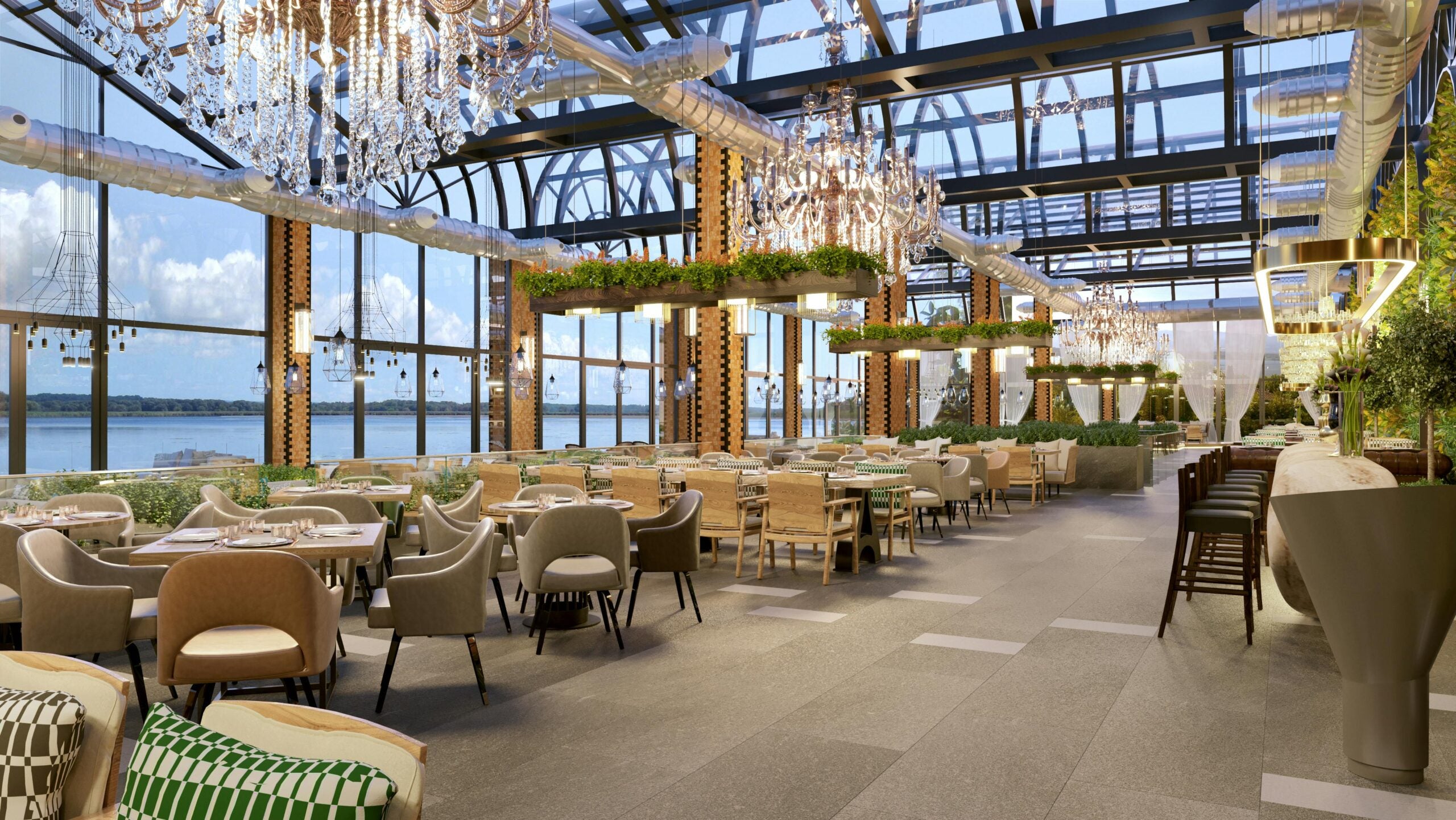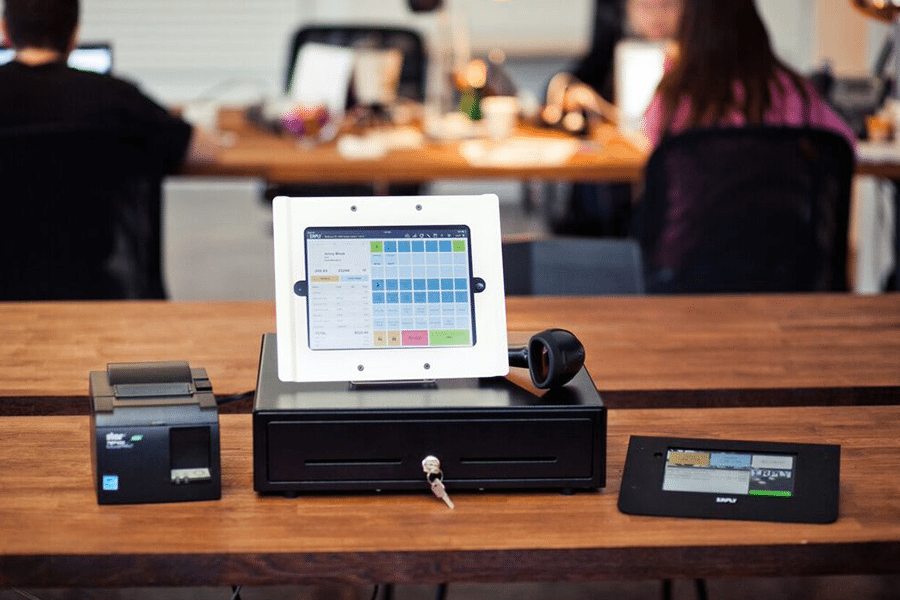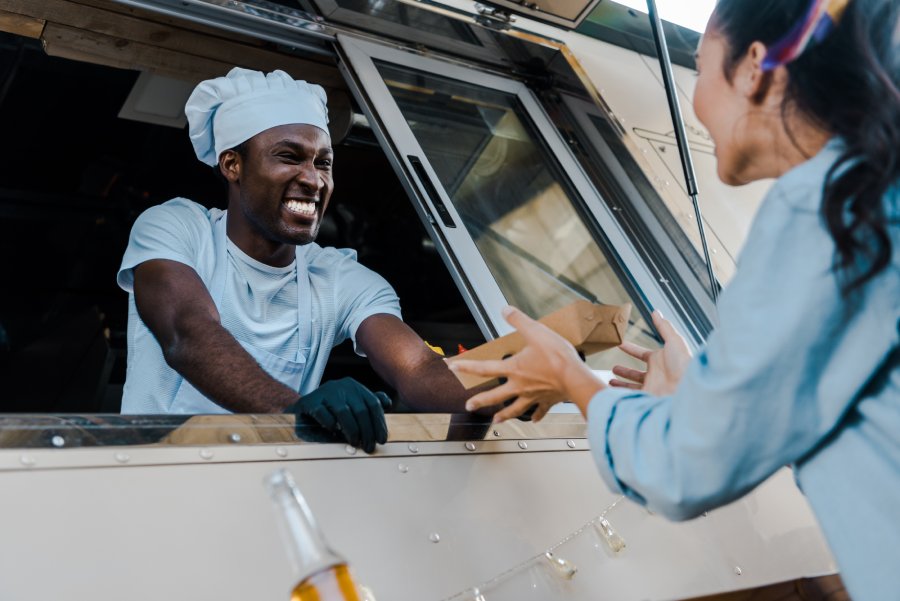Uniforms play a significant role in the restaurant industry, serving both functional and aesthetic purposes. Restaurant uniforms contribute to the branding and atmosphere of your establishment but also ensure your employees are dressed appropriately for their roles.
Restaurant owners and managers have an array of innovative uniform ideas at their disposal to create a unique and memorable dining experience. Whether you run a fast food joint, a casual eatery, or an upscale fine dining restaurant, this article explores 16 restaurant uniform ideas and considerations to help you make the best choice for your business.
1. Use a Uniform Supplier
The best thing you can do when choosing a restaurant uniform is to work with an established uniform company. These companies work with hardwearing materials that keep your staff safe and have the tools to customize your uniform pieces to match your brand. Working with an established company also ensures that your uniforms will be unique—and available when you need more of them. Few things are as exhausting as learning that the uniform pieces you took so long selecting have gone out of stock from a standard retailer.
Check out the table below for some of my favorite restaurant uniform companies. I’ve worked with all of these companies at some point, and have always been impressed with their customer service, product selection, and customization options.
2. Customize Your Uniforms
Regardless of the types of uniforms you purchase, customizations can make them stand out as uniquely yours. From creating custom-made designs with local tailors or uniform companies to incorporating your logo and brand colors, there are various ways to add a unique touch to your uniforms. Whether you’re going for a chic or vibrant look, customizations can set your restaurant apart and help increase brand recognition among your customers.
In addition to style and color, here are ways to stand out:
- Custom-made uniforms: Work with designers, local tailors, or uniform companies to create special designs that reflect your unique style. You can work with the company to design a fabric, or find a designer on Fiverr.com and use a printed fabric site like Spoonflower to have it made.
- Logos: If you don’t already have a logo that reflects your brand, create one. Then you can use the logo on custom fabrics, or have it silk-screened or embroidered on the uniform.
- Color scheme: Color theory plays a role in restaurants too. Bright colors like yellow and orange are warm and friendly. Cooler colors like green signify health and make customers think of leafy greens. Red has been shown to encourage appetite, so it’s a good fallback for any restaurant uniform. Blue is an attractive color on pretty much anyone, but has been shown to have appetite-suppressing effects.
- Branded tools: Uniforms don’t just have to be what you wear. Branded items like wine keys, bar towels, coasters, or writing pads add to the atmosphere.
- Accessories: If you’re on a budget, you can assign a strict dress code, then add a custom accessory to make your brand pop and add consistency. Hats, ties, bow ties, belts, or aprons, can add a little flare.
3. Prioritize Aprons
Aprons are versatile components of a restaurant uniform. They’re essential for staff members working in the kitchen or serving customers and are an excellent way to show the company branding you designed.
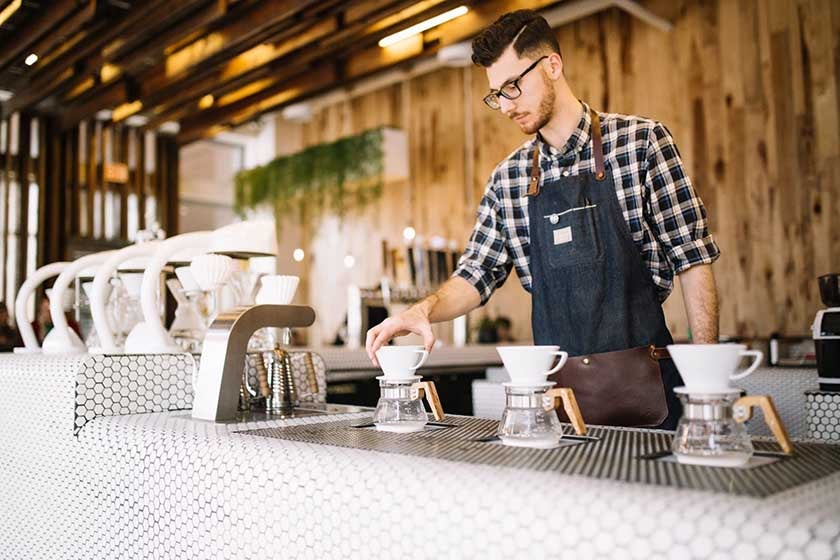
Aprons work great in a variety of dining environments, from coffee shops to fine dining establishments. Pockets are handy for holding and organizing things like pens, checks, menus, notepads, and other items.

4. Use a T-shirt or Polo
T-shirts or polo shirts in your company colors with logos on the back and front are a great fit for a place where workers need a lot of mobility—think pizza places, fast food, delivery drivers, etc.
T-shirts or polos provide comfort and mobility for your staff, especially those on the go. They also look professional but not over the top. Pair them with dress code requirements for pants and non-slip shoes to maintain a professional look while controlling costs.

(Source: Domino’s)
And it’s not a matter of either/or—you can outfit employees in both. Fast casual eatery Arepas to Go and More, for example, uses its slogan on both t-shirts and polos for its staff.

5. Include Hats
Headgear that keeps hair in check is a must in most locations, especially those with open kitchens. Hats can also protect staff from the elements if working at an outdoor restaurant on a sunny day.
Hats are particularly common for fast food restaurants and fast casual eateries. Cookout, a chain of fast food restaurants, includes branded hats alongside its branded tees, polos, and aprons.

6. Feature a Signature Pant
You can also choose to provide pants, shorts, or something similar rather than simply offering tops as uniforms. Many uniform suppliers, like WaitStuff, have these options. You can keep your pants neutral in order not to compete with a bright shirt or apron. Or you could choose the opposite, and opt for a signature color pant or short with a neutral top, like the Hamilton Princess & Beach Club.

(Source: Hamilton Princess & Beach Club)
7. Think Twice About Reuse
While you want good quality, you should also budget for the wear and tear fast-food uniforms take. Even if departing workers return their uniforms to you, they may not be usable by another employee.
8. Choose Washable Materials
Working at a restaurant is messy. Select materials that are stain-resistant and easy to clean so your uniforms stay in good condition. Fabrics like cotton and polyester are washable and ideal for most restaurant environments.
People expect more from upscale restaurants, not just in food and service, but also in atmosphere. Your uniforms should reflect that. They should be higher-quality fabrics.
9. Match the Mood
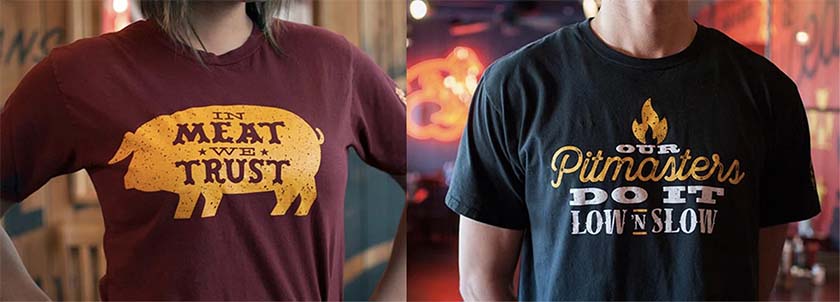
Casual sit-down restaurants going for a friendly atmosphere might consider T-shirts with slogans and catchphrases. If you’re going for something more upscale but still casual, polos or button-downs add a little formality without getting too stuffy.
Darker colors are more sophisticated and hide stains. They’re also great to pair with a contrasting color; though most upscale places stick to neutrals and blues. You may even want to consider custom fabrics. Contemporary uniform companies like Tilit offer sophisticated uniforms and varieties of fabrics and can work with you to create custom uniforms.
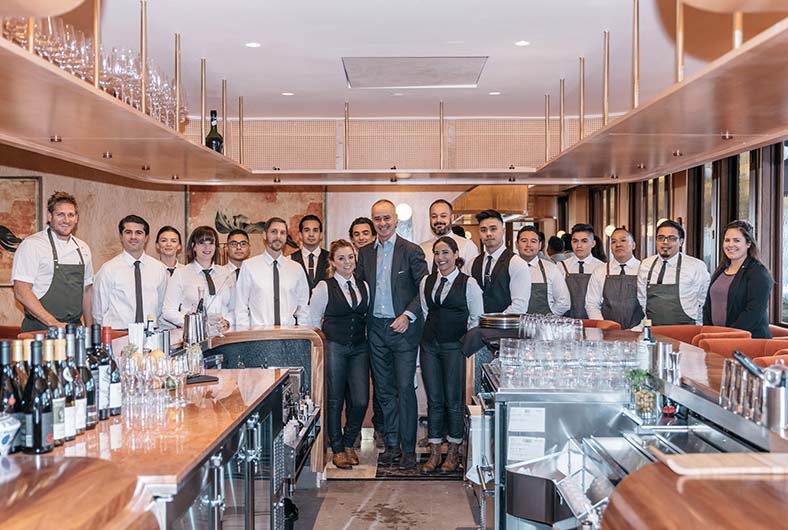
If you have a high-end fine dining establishment that enforces a dress code for your customers, you probably want your staff to dress at the level of your diners or higher. Subtle logos and stylish uniforms that differ by role can lend an air of sophistication to your staff.
10. Work With a Designer
Many fine dining restaurants work directly with fashion designers to create styles that suit their brand. For example, the cutting-edge Chicago restaurant Alinea worked with the Zegna label to design their staff uniforms. This is a far more expensive option but really gives your restaurant a one-of-a-kind look.
11. Design Uniforms by Role
With every worker having a special role, you can vary uniforms by specific needs. Take inspiration from fast-food chains by implementing a hierarchy in your staff uniforms. Provide comfortable and practical uniforms for general workers while offering upgraded options for management positions.
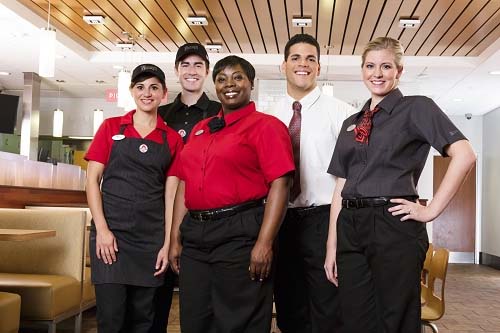
For other restaurants, hosts may wear dresses or vests, while bartenders wear jackets. You may want to dictate the entire uniform, down to shoe style, in order to achieve a truly cohesive look. Consider having some extras, like clean chef jackets for example, stocked in your back office so your team always looks polished in your dining room.
12. Consider Vests
Vests are fairly common in sit-down and upscale restaurants, often for bartenders or hosts. Sometimes, they’re accompanied by a nice jacket. Vests not only create a nice image, but also provide a lot of utility. Staff can hold lots of bar tools, and they’re often easy to wash. They offer a layer of protection from stains, spills, burns, cuts, and more.

People often choose a bar for its atmosphere, so the uniform you choose should support the brand or the uniqueness of the location. Tiki bars favor bright colors or floral prints, while a sophisticated downtown bar may dress bartenders in white jackets. Regardless of the style you choose, be sure that bar uniforms are easy to move around in and washable. Vests paired with a pocketed half-apron are popular, classy, and protect against spills.
13. Implement a Dress Code
A dress code gives general guidelines and leaves the employee to choose the items. For example, you might get different shades of red T-shirts, black pants that vary from tights to black denim to flowing wide-leg slacks.
Document your dress code and go over it during the onboarding process to ensure transparency and clarity.
Uniforms may be ordered from a distributor either in bulk, or by piece by the employer. Employers often pay for uniforms or supply them and take the cost from the employee’s paycheck. The variety of uniform items you need will depend on the types of restaurant staff you employ.
14. Ensure Safety
Prioritize safety in your restaurant uniforms, especially in environments with potential hazards like open flames or food preparation. Consider items like non-slip shoes, head coverings, and gloves to ensure your staff’s safety.
15. Think About Employee Tasks
Different restaurants have different uniform needs. Uniforms should allow employees to perform their tasks comfortably and efficiently. Avoid restrictive or uncomfortable fits that hinder their ability to work effectively.
Pick something your employees feel comfortable in. Olive Garden, for example, changed its uniform from a white shirt and tie to a more comfortable but stylish black button-down after employees complained about the ties.

16. Tap into Local Culture
Think about the location where you’re doing business. Is there some way you can tap into local culture, trends, or fashions to give your team something they feel comfortable in?
Holidaily, for example, a woman-owned brewery in Golden, Colorado, offers flannels for its staff to wear while on the clock. The flannels are very Colorado in both style and function, and also feature a logo.

How to Choose a Restaurant Uniform
When selecting restaurant uniforms, consider factors such as the work environment, employee tasks, safety, health requirements, style, budget, and turnover rate. Striking the right balance between functionality and aesthetics is crucial. You don’t have to purchase every item in your employee’s uniforms, but you will need to address each item in your uniform policy.
Remember each component of your front of house and back of house uniforms. Your uniform policy should address them all.
Front of House vs Back of House Uniforms
| front of house (foh) | back of house (boH) |
|---|---|
| Shirt: This is an excellent opportunity for branding. Or you can list the type of shirt that is acceptable for your uniform and let staff purchase their own shirt. | Hat: Hats or head coverings are generally required by health code. |
| Pants: You can purchase and provide uniform pants, but it is more common to set out pant requirements and allow employees to provide their own. | Chef coat: Chef coats are made of heavy-duty canvas that helps prevent cuts and burns. |
| Apron: It is common for restaurants to provide aprons for their front of house staff. | Apron: Aprons are standard kitchen issue. Kitchen aprons tend to be lighter and more frequently laundered than front of house aprons. |
| Socks: You’ll want to mention socks in your uniform policy. | Pants: You’ll want to have strict regulations on pants in your kitchen, since the wrong pants can lead to oil and oven burns. |
| Shoes: Some restaurants provide shoes (like custom Converse sneakers) for their staff, but it is more common to set style parameters and allow employees to provide their own. | Socks: Socks may not be an official part of your kitchen uniform, but you want to mention that socks are required in your uniform policy. They can prevent burns on the legs, and ensure that non-slip shoes do their job. |
| Jewelry: Your uniform policy should mention what jewelry is acceptable. Most health departments only permit wedding rings, watches, and earrings with secure backs. | Shoes: You should require non-slip, supportive shoes in your restaurant’s kitchen to prevent slips, falls, and other injuries. |
| Accessories: You should mention items like belts, ties, suspenders, and other items to ensure a cohesive look. | Jewelry: Most health codes limit jewelry in a restaurant kitchen to simple wedding bands and watches. |
It’s not necessary to have a complex uniform. For some restaurants, a single item like a T-shirt can keep your brand. Aprons are the easiest default, and you can keep them in the restaurant and reuse them since they fit anyone.
Regardless of the type of restaurant you have, uniforms should be something your employees are comfortable wearing. That means keeping in mind body shape as well as size. While some restaurants expect tight or provocative clothing, most restaurants default to modesty and sensible shoes. These are some other things you’ll want to consider when designing your restaurant uniform strategy:
- Work environment: The materials should match the work environment. Cotton breathes easier, while some polyesters deflect water. Avoid nylon, which clings to the body and doesn’t ventilate. Offer short and long-sleeve options, especially if you air-condition heavily.
- Employee tasks: Uniforms that are too restrictive can slow staff down, and uncomfortable fits make it hard to complete tasks that involve stretching or quick movements.
- Safety: When considering styles and fabrics, think about conditions like gas fire stoves or barbecue pits. Sturdy shoes with non-slip soles are a must BOH and for most of your staff FOH. Chefs might benefit from sleevies or long-sleeved jackets to protect against burns.
- Health requirements: Health codes require people handling food to wear headgear to keep their hair in check and gloves. Polyester has higher anti-microbial protection than cotton.
- Style: In addition to brand colors and obvious themes, think about where you sit on the scale of flamboyant to formal. Also, consider styles that look good on all kinds of people, especially if you are thinking about dresses for your female employees.
- Budget: Every employee should have at least two uniforms so that one can be in the wash at any time. Plan for spares. You can have common items, like aprons, that never leave the restaurant. In addition, think about replacement items and cleaning costs.
- Turnover rate: The more items you provide in a uniform, the more likely they will be lost, forgotten for a shift, or taken when the employee leaves. If you have a high staff turnover this is a greater concern.
Benefits of Having Uniforms for Your Restaurant
You don’t have to have a uniform for your restaurant staff, but restaurant uniforms offer some advantages. They help ensure your employees are wearing appropriate clothing for work. And they promote your restaurant’s atmosphere and brand. Many diners and employees actually prefer them.
These are some key benefits to uniforming your restaurant staff:
- Customer preferences: Studies have shown that customers feel they receive better service and a better product when they interact with uniformed staff.
- Employee preferences: Many restaurant employees like not having to worry about what to wear to work. Though many studies also indicate that employees who don’t like their uniforms may have negative attitudes and even avoid customers, which can affect service. So keep employee satisfaction in mind when choosing uniforms.
- Brand building: Staff uniforms are essentially another storefront for your restaurant, as visible as the sign over your front door.
- Increased safety: The right uniforms can prevent slips and falls, and even keep your staff from getting burned.
- Team building: Wearing a uniform builds team spirit and can even help your staff work more like a team.
Restaurant Uniform Frequently Asked Questions (FAQs)
These are the most common questions I hear about restaurant uniforms. Expand the sections below for answers.
Bottom Line
A good restaurant uniform, combined with a uniform policy, helps ensure your employees are dressed safely for the job, promotes your brand and atmosphere, and helps tie a team together. Restaurant uniforms can be as fancy as a complete suit plus socks and shoes, or as simple as an apron with your logo.
Think about the unique needs of your restaurant style in terms of working conditions, employee roles, and how casual or formal a dining experience you want for your customers. Next, be sure you have a clean logo to use on your uniform. Finally, we recommend purchasing through a specialty uniform supplier rather than buying retail, as uniform providers provide bulk pricing, save your designs, and specialize in resilient, long-lasting materials.

